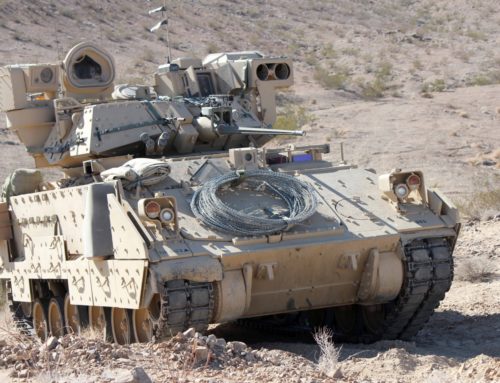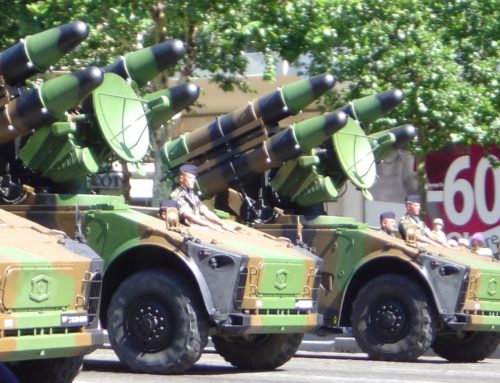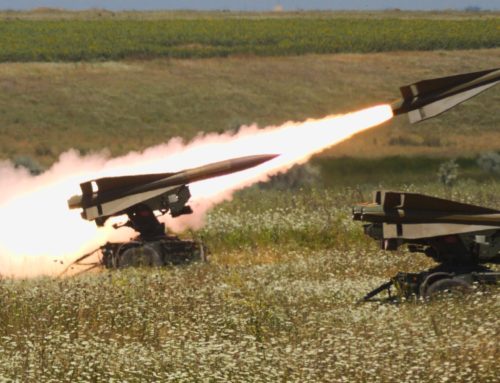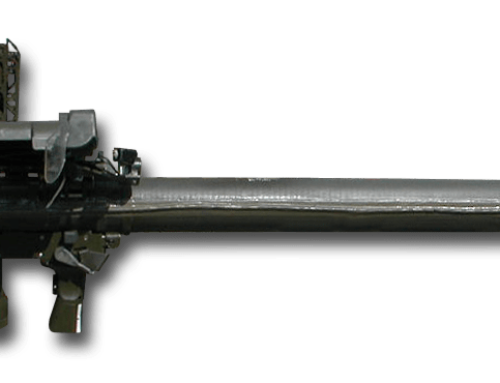A Brief History of the SA-13
Designed as a replacement for the SA-9, the SA-13 was designed to have; greater range, more lethal missiles and radar ranging capability. Development began in 1969 in parallel with the SA-19 Grison – the theory being that the SA-13 would compliment the SA-19 in heavy ECM environments where the radar guided SPAAG would be less affected. The system was required to be able to engage targets at all aspects (frontally etc – a huge improvement over the SA-9), be able to engage targets with a closing speed of mach 1.2 and finally, receding targets at a speed of mach 0.9. The system was unique for the soviets at the time as it had a ranging radar backed up with a TV/IR sight to allow for all weather engagement. The system went through a few upgrades most notably to the missiles – improving range and seeker efficiency. For example; the baseline missile 9M37 had a two mode seeker, this was upgraded in 1979 and 1981 to 9M37M2 with a tri-mode seeker (infrared, visual contrast lock and home on jam – this variant is not in BMS).

The System
The Radar
The SA-13 is equipped with a small ranging only radar known as ‘Snap Shot’. Capable of providing an accurate range upto between 15 – 19 miles. The radar is a millimetre wave radar (MWR) which allows extremely accurate ranging information for low altitude targets. This also prevents it from registering on the RWR on the F16.

The Missiles
In BMS the standard 9M37 missile is used providing a maximum range of 5nm and has theoretically no minimum range. The theoretical maximum engagement altitude is 26,000’ but this will never happen in practice, instead a good maximum altitude that should be used is around 11,000’. Again the missiles have no minimum altitude but if they launch at a target flying fast below 200’ their chance of hitting is hugely diminished. In BMS the average engagement range of the missiles is around 2nm at 9000’ providing the optimal conditions for the missiles. The missile launch sequence is widely similar to the SA-9. The operator will track and acquire the target and place it within the symbology of his sight. He will order the vehicle to a stop and uncase the missiles from their launch boxes exposing the seeker head to the target. The 9M37s 9E47M (two channel all aspect elctro-optical) seeker will acquire the target and indicate its ready to launch state by an electronic tone in the missile operators headset. After depressing and holding the firing button the missiles throwout motor will eject the 9M37 from the launch box and after it is clear of the launch vehicle the main rocket motor will activate propelling the missile towards the target at a speed of mach 1.6. Upon reaching the target the missile has both a contact and laser proximity fuze which will activate the 9N125 3kg combined fragmentation and expanding rod warhead.
An example of a missile launch from multiple perspectives can be found here – https://www.youtube.com/watch?v=rIDTcHPby1o and here at the 7.00 minute mark https://www.youtube.com/watch?v=QDrwdm4WNU4

How to defeat SA-13
The 9M37 is a very fast and agile missile making a successful defeat a challenge. The missile has excellent IRCCM and requires a 7-9G break turn with multiple flares to seduce the missile as well as kinetically defeat it. Bare in mind the relatively short range of the missile which can be exploited easily. Additionally terrain masking and masking in front of the sun are equally valid tactics in defeating this SAM.

How To Destroy SA-13
The SA-13 is a mobile SHORAD based on the MT-LB troop carrying chassis, this provides the vehicle with basic small arms and fragmentation protection. However this also provides the vehicle with a distinct shape that allows for easy identification, even through AGM-65 seekers. The best weapon to safely pick off SA-13s is the GBU-12 from an altitude above 15,000’. If this is not possible then AGM-65A/D is advised coupled boresighted to TGP to allow identification from a longer range and for multiple targets to be engaged simultaneously.

Tactical Use of SA-13 in BMS
Much like in real life, the SA-13 is used to provide close range air defense over high value battalions, such as HQ and HART battalions. Additionally in some cases SA-13s can be paired with SA-19 and ZSU-23-4 (Shilka) systems to provide optimal air cover.

Quick Reference
- Rmax – 5nm
- Rmin – N/A
- AltMax – 11,000
- AltMin – N/A




